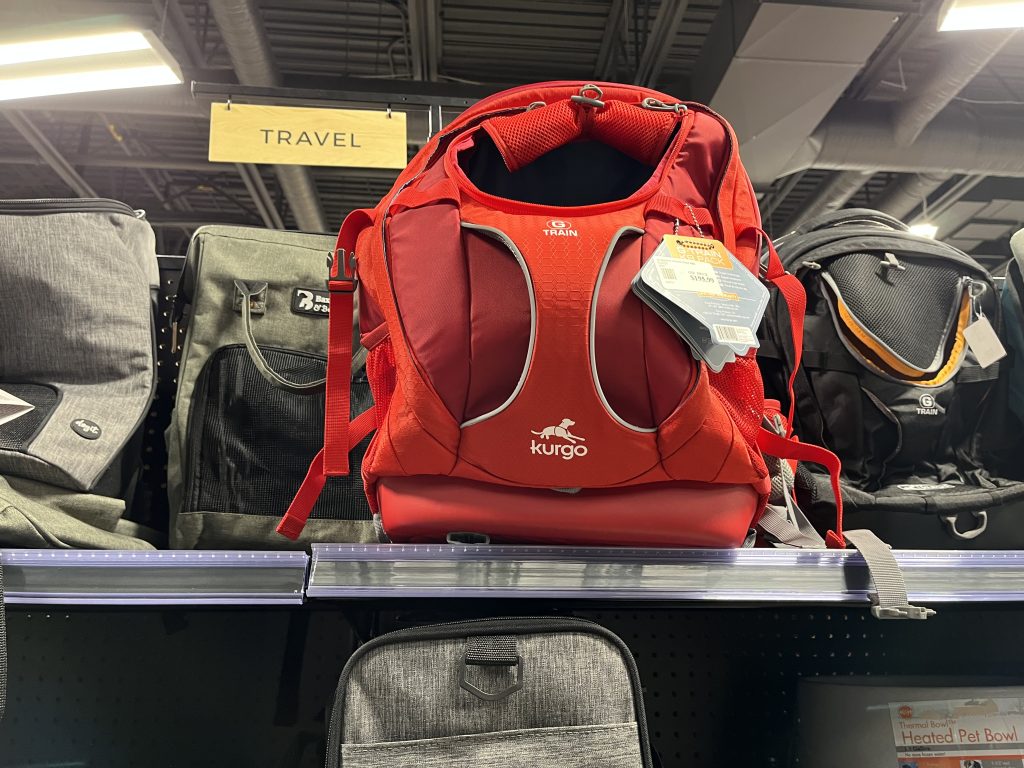Preparing for holiday travel with your pets

Posted December 14, 2023 1:03 pm.
As Edmontonians and Canadians prepare for travel by plane this holiday season, experts share their tips for flying with pets.
Nicole Ellis, Certified Professional Dog Trainer with Rover, tells City News it’s important to plan if you want to fly with your furry friends. She says it’s important to notify the airline ahead of time, as travellers can’t usually book their pets online, and often have to call the airline directly.
“A lot of airlines have a limit on how many animals can go on a flight, so you want to make sure your flight is as least stressful as possible,” Ellis says. “Travel can be stressful, especially with our pets and we want it to go smoothly and create good experiences and more travel together.”
“Airlines, there’s lots of bustling, loud sounds and pressure changes and lots of commotion. If maybe we live in a quiet, little area and our dog loves their quiet life, are they going to enjoy that?” asks Ellis.
“Travelling for dogs can be extremely stressful and for cats as well … so we need to take in the travel aspect and then the location we’re going to,” Ellis says.
Edmontonian Lorene Kowalski says travelling by plane would be too stressful for her dogs Dory and Hailey.
“I like to travel with them wherever I go, but I usually like to drive,” Kowalski says. “I’m not a big one of putting pets on aircraft. They get so stressed out, or else you drug them so they can stay in cages and say ‘What the heck is going on.’”
“If you can’t bring your pet in the cabin with you, I always say, first of all, does your pet need to come with you? Obviously, if you’re moving across the country or to another country you may not have other options. Always explore those other options. I’m personally not a fan of putting dogs on cargo,” Ellis says.
“Medication wise you can speak to your vet, Generally we do not want to medicate our dogs. Often they cannot regulate their body temperature the same way and in different parts of the airline it might be really cold or really hot and we want to make sure they are comfortable, safe, healthy, and happy.”
Tips for getting your pet used to its carrier
Getting your pet used to its travel carrier is also important, especially if you don’t transport your pet in it very often. Ellis says making sure your pet is used to its carrier can also cut-down on the stress of travel.
“Practice way ahead of time, like today – and so I get my carrier out – I actually have it here, and he will dive into it, we play fun games throwing treats in it so on the day we travel he’s not stressed out,” Ellisa says.
Ellis says it’s important to prepare your pets in advance and practice in advance – by play fun games in the carrier and, tossing treats in and out – and you can practice carrying it around so they get used to it moving.
“We want to make it a nice, fun, positive experience, and travelling is full of so many crazy sounds, especially when we’re flying and we don’t need to make that experience more stressful on our pets,” said Ellis.
“And with any airline travel, even if they are coming under the seat with us, we do want to make sure they are going to enjoy it.”
General travel tips with pets
Ellis says in general if you are going somewhere to explore, you should plan ahead and ask yourself if you’re going to be doing pet-friendly activities – if not, she says it’s important to check exactly what each “pet-friendly” hotel specification means – saying it can mean different things in different cities. Ellis says in some hotels, you have to be in the room with your dog at all times. Other times you can’t leave your dog alone at all, and in some cases, hotels require you to crate your dog.
It’s also important to make sure all your activities are pet-friendly, wherever you’re travelling.
Ellis says if you’re doing a weekend trip and think your pet will be stressed-out travelling, it’s best to explore other options like leaving pets with family members or friends or finding a pet sitter through apps and services, such as the company she works for – Rover.com
“We want to make sure everybody is confident and happy,” Ellis says.
“If you’re going sightseeing, can you bring a dog? Will they enjoy that? When we’re in that moment and our dog is stressed out, it’s also not so fun.”
If you’re travelling to another city and have a busy day planned, Ellis says you can look for a trusted pet sitter.
According to the airlines
Airlines usually only allow a few pets on board per flight, depending on the aircraft so you have to book fairly far ahead.
In most cases, you have to call the airline directly to book your pet and it’s not something you can always do online.
According to major airline websites, it’s also best to consider direct flights instead of connections. Regardless, there is a pet kennel fee whether your furry friend is travelling in the cabin or as checked baggage.
The cost of travelling with your pet in the cabin within Canada one way is $50.
You also must leave your pet in their carrier. If you do remove them you could be banned from travelling with your pet on future flights.
According to WestJet – they recommend you consult your vet before booking your flight and they say you should not give them any sort of tranquilizer without talking to your vet first.
Air Canada recommends that you register your pet within 24 hours of completing your booking. Noting that after 24 hours, you may be subject to additional charges.
Under the Canadian Transportation Agency’s rules, if someone on your flight has allergies, you may be required to move closer to the back of the plane.
If you are considering ‘checking’ your pet, you will need a hard-sided carrier, and you must feed and give them water within four hours of your flight.
Some breeds also can’t travel into or through Ontario, including pit bulls.
Air Canada also has restrictions on travelling with pets at certain times of the year.
Due to high heat, pets are not allowed to travel to the following countries at any time of the year: Aruba, Belize, Cayman Islands, Costa Rica, Cuba, Curaçao, Doha, Dubai, Jamaica, Panama, Trinidad and Tobago
There are also other temporary restrictions based on the time of year to the following countries: India, St Lucia, St Maarten, Turks and Caicos, Egypt, Dominican Republic, Puerto Rico, China, Hong Kong, Japan, Korea, Greece, Hawaii, Israel, Italy, Mexico, Bermuda, Morocco, and parts of the United States.
Likewise, there are also seasonal restrictions during the winter. Air Canada says that from November 1 to March 31 or any time the temperature is 0°C or colder, Cats and dogs weighing less than 4.5 kg (10 lb) are not accepted in the baggage compartment of any aircraft.
- For more on Air Canada’s guidelines on traveling with pets, click here.
- For more on WestJet’s guidelines on traveling with pets, click here.
In addition, due to peak travel periods between December 18 and January 4, pets are not accepted as checked baggage or cargo.
If you are travelling with your pet on an airline over the holidays – you’ll want to make sure you have the right carrier. If you’re going to check your pet and put them under the plane, you’ll need a hard carrier, but if you are bringing them in the cabin under your seat, you’ll need a soft-sided one.
Experts say flying can be stressful for pets, especially if they are too big to go in the cabin.
It’s also suggested you visit the vet ahead of time to ensure your pet is in good health.








